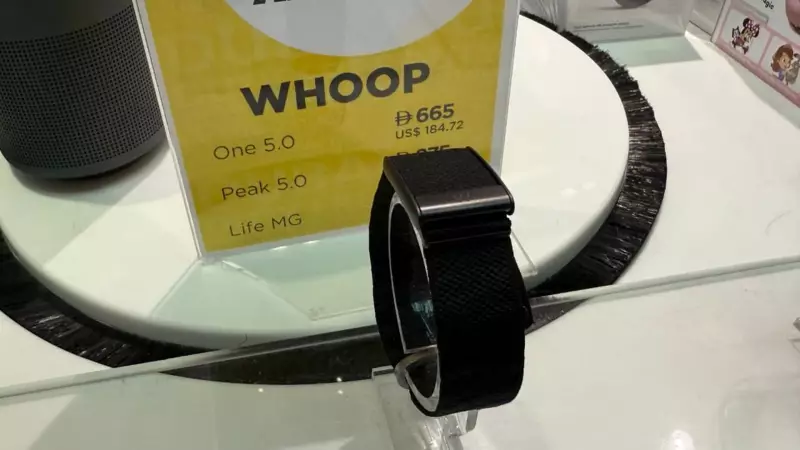
The Rise of Discreet Fitness Tracking
In recent months, a quiet revolution has been sweeping through the wearable technology market. At major tech conferences across San Francisco, Los Angeles, San Diego, Hawaii, and Boston, one device has become increasingly visible on the wrists of top tech executives – the screenless Whoop fitness tracker. This discreet, always-on wearable has captured the attention of Silicon Valley's elite and is rapidly gaining popularity among athletes, celebrities, and fitness enthusiasts worldwide.
The trend extends beyond just the Whoop band. Smart rings like the Oura have also emerged as popular alternatives to traditional smartwatches. What makes these devices particularly interesting is their screenless design, intended for 24/7 wear, and their focus on providing deep health insights rather than just basic fitness metrics.
Understanding the Screenless Wearable Phenomenon
While some might argue that devices like Whoop, Amazfit Helio, and Oura smart rings target a niche audience, the reality is that demand for such discreet tracking solutions is growing exponentially. The market validation is evident in the impressive valuations these companies have achieved. Whoop has already become a $3 billion brand, while Oura, the smart ring manufacturer, is targeting $2 billion in sales by 2026.
These numbers might seem modest compared to Apple Watch's annual revenue, but as screenless tracking devices expand beyond the United States into markets like India and other Asian countries, industry experts predict that discreet fitness tracking will soon become mainstream.
The Data-First Approach to Health Tracking
The fundamental difference between screenless wearables and traditional fitness trackers or smartwatches lies in their "data-first" philosophy. Unlike earlier fitness bands like the Xiaomi Band or modern smartwatches such as the Apple Watch, devices like Whoop and Polar Loop prioritize comprehensive data collection and analysis over screen-based interactions.
Traditional fitness trackers primarily focused on basic metrics like step counting and sleep monitoring. Smartwatches later expanded this functionality with larger screens and advanced features. However, screenless bands and rings take a completely different approach by collecting data passively in the background, free from screen distractions, and providing deeper insights into recovery, stress levels, sleep quality, and overall training load.
The Whoop story exemplifies this data-driven approach. Founded by Will Ahmed, a former Harvard squash team captain, Whoop emerged from his personal frustration with understanding his body's response to training. Ahmed's experiences with overtraining and poor sleep management led him to explore heart rate monitoring, recovery tracking, and sleep analysis, eventually resulting in the first Whoop device developed at Harvard Innovation Labs.
Subscription Models: The New Wearable Economy
One of the most distinctive aspects of using screenless trackers like Whoop and Oura is their subscription-based business model. Unlike traditional wearables that consumers purchase outright, these devices require ongoing monthly subscriptions to access data and insights.
Whoop operates on a subscription system where users don't pay upfront for the hardware. Instead, they choose between plans costing $30 per month or $239 annually, which includes the band and full access to the app's features through an automatic renewal system. The company currently offers three subscription tiers: Whoop One ($199/year), Whoop Peak ($239/year), and Whoop Life ($359/year), each providing different levels of software and hardware capabilities.
Oura follows a similar approach, with rings starting at $299 and requiring a $5.99 monthly membership (with the first month free) to unlock the complete smart ring experience, including detailed sleep analysis, personalized health insights, heart-rate monitoring, and temperature tracking.
This subscription model represents a fundamental shift in how consumers interact with wearable technology. As Whoop's approach demonstrates, they're essentially renting a fitness-tracking service rather than selling a physical product. The software becomes the core component, and without the subscription, the hardware offers limited functionality.
Market Impact and Future Outlook
The emergence of screenless wearables doesn't necessarily signal the end of smartwatches. Devices like the Apple Watch remain extremely popular, particularly in the premium segment where brands like Apple, Samsung, Garmin, and Google maintain strong presence. However, the low-end smartwatch market, once dominated by Indian and Chinese companies, has seen significant decline due to limited functionality.
Screenless wearables and smart rings cater to a specific audience seeking no-screen devices with in-depth analysis and extended battery life. While currently positioned as premium products, the market is likely to expand as more brands introduce affordable alternatives without subscription requirements.
The most significant takeaway is that both product categories will likely coexist, serving different user needs and preferences. Smartwatches will continue evolving as multifunctional devices, while screenless trackers will focus on specialized health monitoring and analysis. For consumers, this means more choices and better-targeted solutions for their specific health and fitness requirements.





